Meet the Japanese serow: The unique goat-antelope of the Honshu mountains
- Nature Conservation
- Land Conservation
- Iconic Species
- Wildlife
- Mammals
- Japanese Islands
- Eastern Eurasia Realm
One Earth’s “Species of the Week” series highlights an iconic species that represents the unique biogeography of each of the 185 bioregions of the Earth.
The Japanese serow (Capricornis crispus) is a goat-like antelope with coarse, bushy fur that roams the misty forests and steep mountain slopes of Japan. Found primarily in the dense woodlands of northern and central Honshu, this elusive species thrives in cool, deciduous forests filled with towering beech and cedar trees.
In these environments, where sunlight filters through thick canopies and fog blankets the undergrowth, the serow makes its home. Observing this sure-footed mammal in its natural habitat is a rare experience—a reminder of Japan's ancient wilderness, preserved through time.

The Japanese serow is the iconic species of the Japan Forest Islands bioregion (PA47), part of the Japanese Islands subrealm in the Eastern Eurasia realm.
An enigmatic appearance
Standing around 81 centimeters (32 in) tall and weighing up to 45 kilograms (99 lb), the Japanese serow might be mistaken for a deer or even a small bear. Its thick, bushy coat, ranging from dark brown to whitish-gray, lightens in the summer months, blending effortlessly with the changing landscape.
Both males and females have short, curved horns and a compact build. Their large, expressive eyes and delicate cloven hooves hint at a mix of strength and gentleness—traits well-suited to their rugged mountain environment.
The seasonal diet of the serow
In the early morning and late afternoon, the serow ventures out to graze on leaves, shoots, and acorns. Their diet shifts with the seasons, matching their resilience to Japan’s varied climate.
Alder, cedar, and witch-hazel make up their herbivorous palate, which they efficiently process through a specialized, four-chambered stomach. This ability to adapt their diet to available resources makes them a resilient species in Japan’s often harsh and fluctuating seasons.
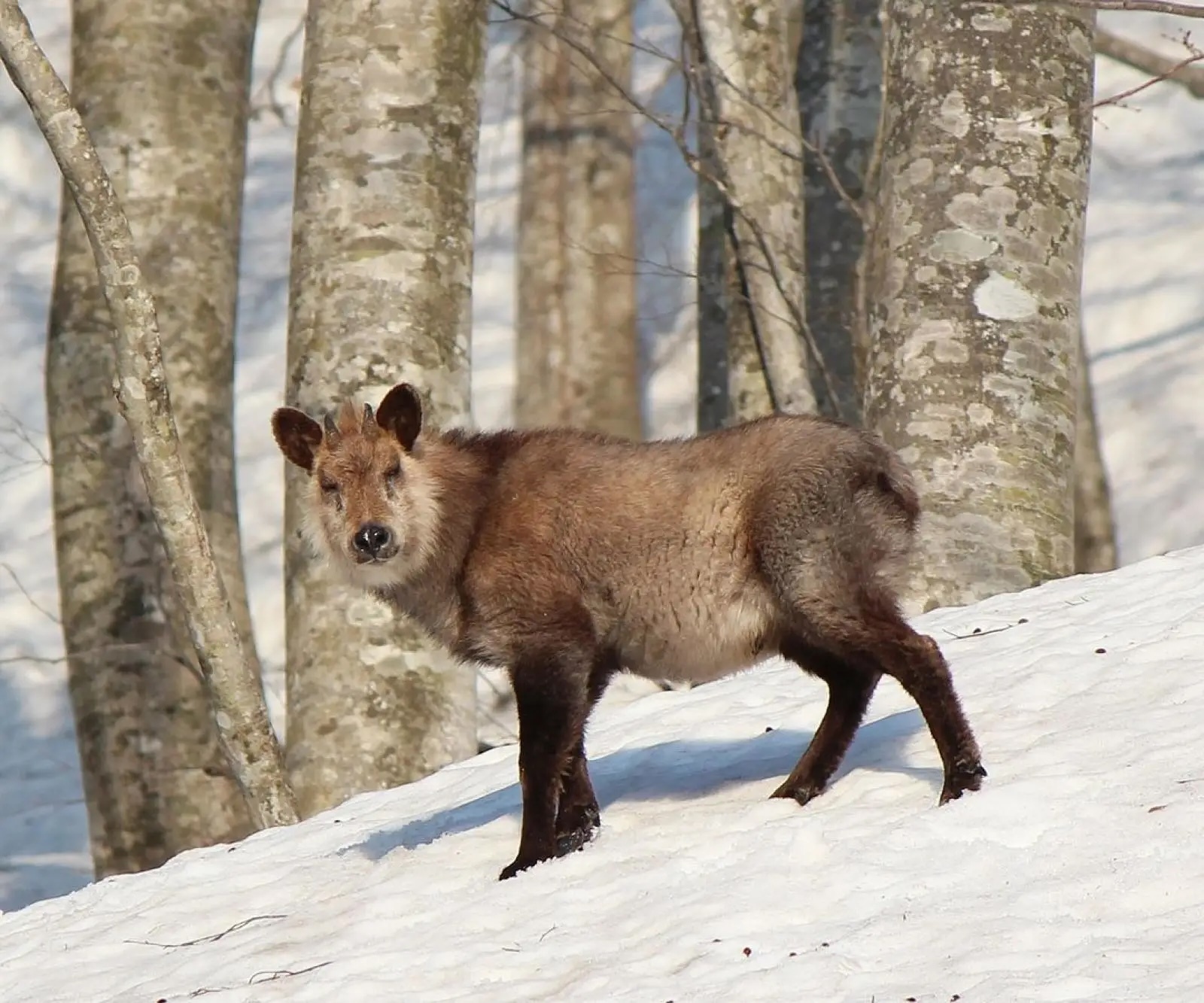
Japanese serows can leap gracefully between steep mountain ledges, displaying agility and sure-footedness unique to these solitary mountain dwellers. Image Credit: Alpsdake, Animalia.bio.
Ecosystem engineers of the forest
Japanese serows play a vital role in maintaining forest ecosystems by controlling vegetation through their browsing habits. Feeding on leaves, shoots, and acorns, they prevent overgrowth, promoting a diverse understory that supports a variety of plants and animals.
This natural pruning not only fosters biodiversity but also enhances soil quality by redistributing nutrients and encouraging regeneration. As ecosystem engineers, Japanese serows contribute to the balance and health of their mountainous habitats, ensuring a thriving environment for other species.
Lone wanderers of the peaks
Serows are known to be solitary, marking their territory with a distinct, sweet-sour scent produced by glands near their eyes. While encounters with other serows are uncommon, they are not entirely devoid of social structure.
Some serows form pairs or small family groups, but each maintains its own distinct territory. Agile and sure-footed, they navigate their mountain homes with a grace that has inspired Japanese culture, from folklore to poetry.
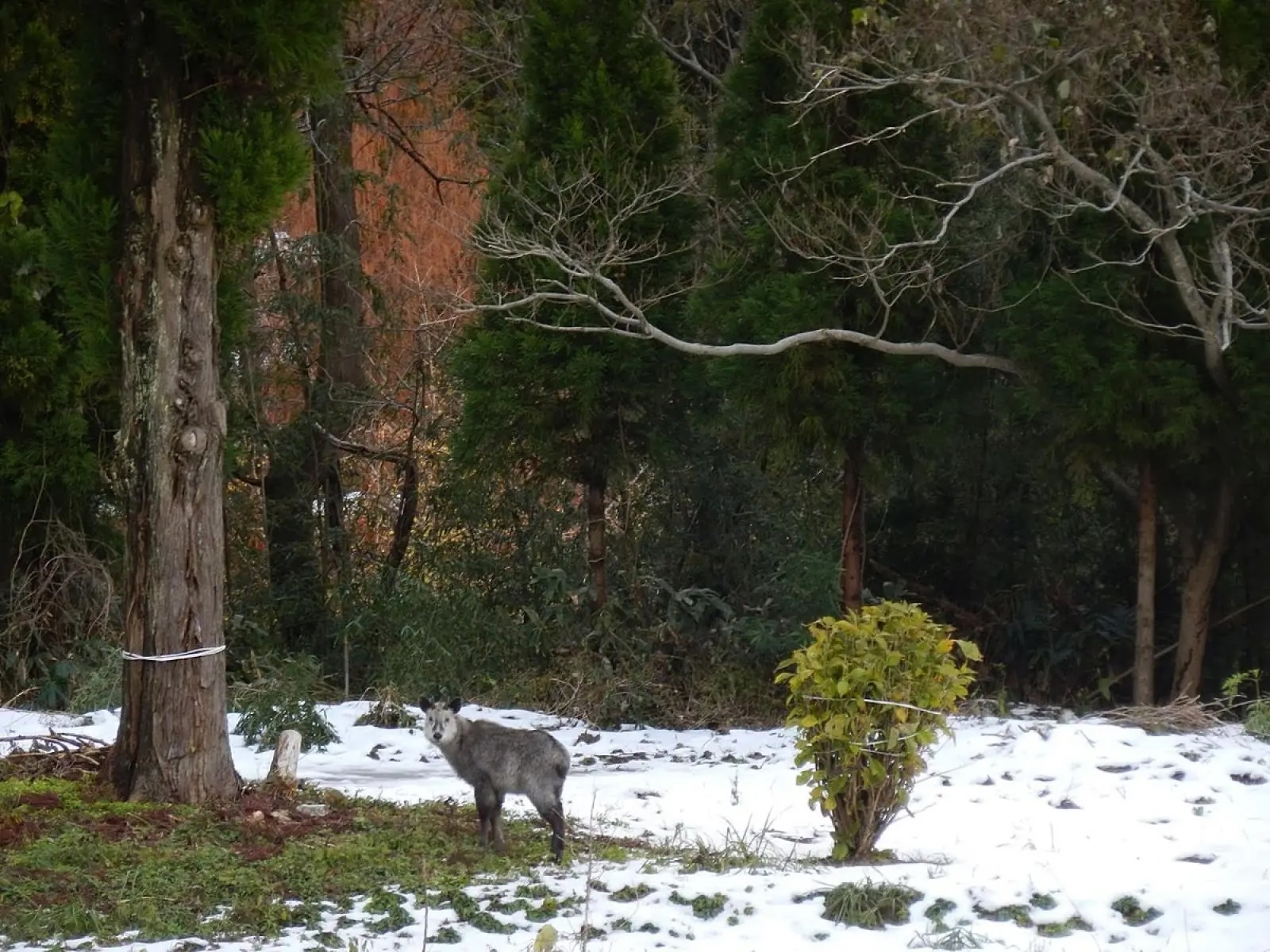
Primarily found in Honshu, the Japanese serow adapts its diet with the seasons, foraging on available plants, leaves, and acorns in the dense mountain forests. Image Credit: Kiwa Dokokano, Animalia.bio.
A cycle of renewal
Mating season arrives in the colder months, with elaborate rituals that mirror those of other mountain dwellers. Gestation lasts about 220 days, after which a single fawn is born.
The young serow stays close to its mother for up to two years, learning the rhythms and boundaries of life in the mountains. With a lifespan that can reach 20–25 years, serows pass on survival skills across generations, continuing their presence as long-term inhabitants of Japan's mountain ecosystems.
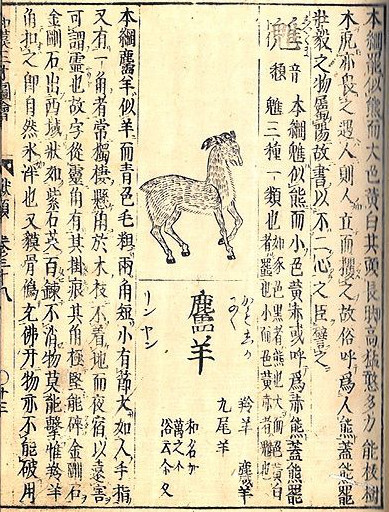
An entry on the serow in the 1712 encyclopaedia Wakan Sansai Zue. Image Credit: Terajima Ryōan, Wiki Commons.
Sacred symbol of the mountains
In Japan, the serow, or kamoshika (氈鹿), is more than an animal—it’s a symbol of the nation’s wild heritage. Ancient texts from the Heian period mention the serow in reference to its powerful, almost mystical presence in the mountains.
In traditional medicine, every part of the serow was utilized, from its meat and waterproof hide to its horns, believed to hold curative properties. Revered as a “living national treasure,” it has become an icon of Japan’s natural world and an embodiment of the country's ancestral bond with its wilderness.
Facing the pressures of a modern world
Though protected by law, the serow’s future is challenged by human encroachment and agricultural expansion. As forested areas are cleared for timber and farming, serows find themselves pushed from their natural habitats into less hospitable areas. Conflicts with foresters and farmers, who view them as pests, have led to controlled culling outside of conservation zones, despite their protected status.
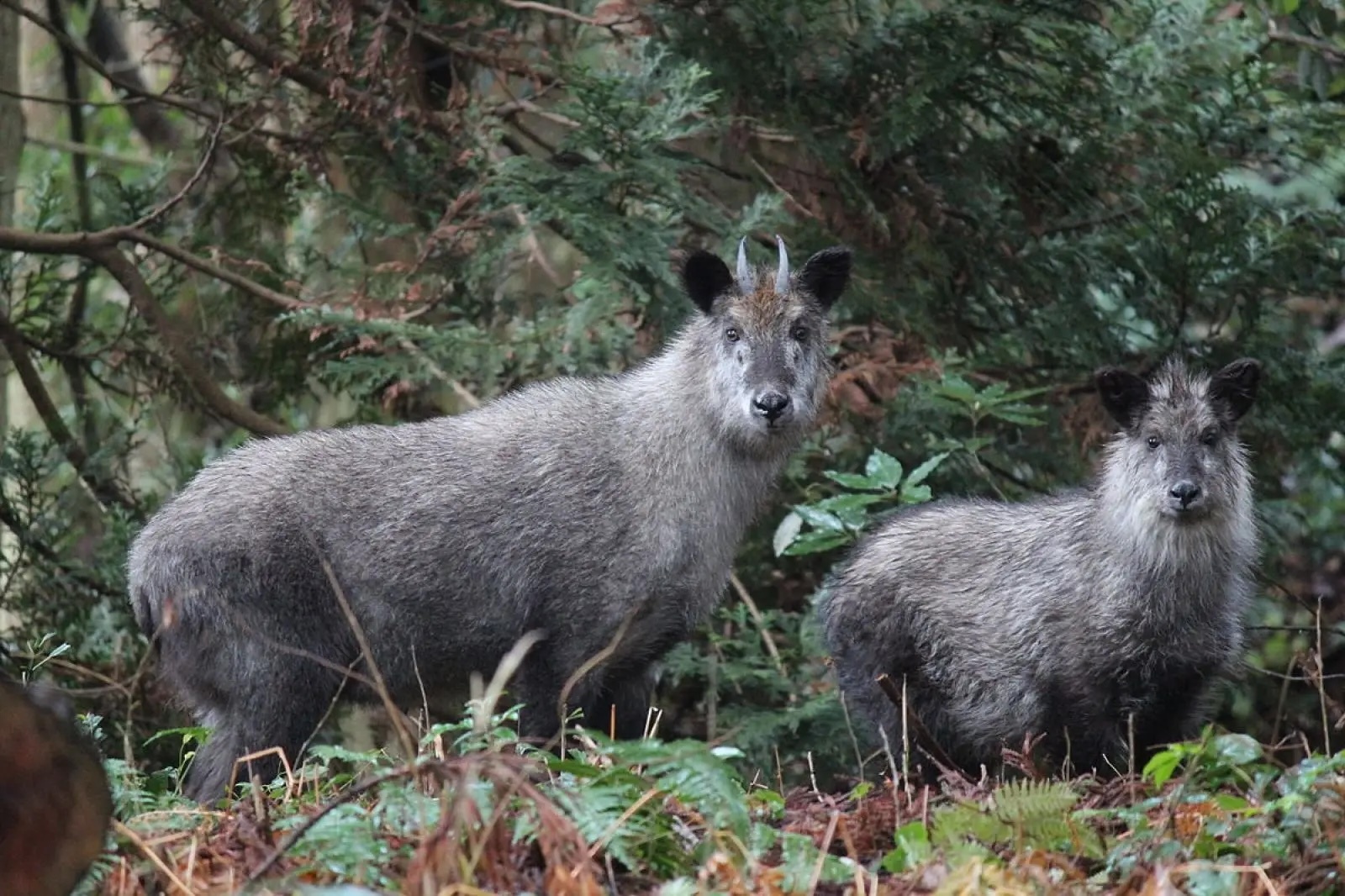
As a 'living national treasure' of Japan, the Japanese serow’s bushy coat and curved horns help it blend seamlessly into its rugged, forested habitat. Image Credit: ヤン提督, Animalia.bio.
Guarding Japan's 'Living National Treasure'
Today, the Japanese serow is classified as Least Concern by the IUCN, yet it relies on continuous conservation efforts for its survival. Designated conservation areas across Japan, such as the Minami Alps National Park, aim to protect this iconic species from habitat loss and human-wildlife conflict.
Local communities and conservationists collaborate to manage their population sustainably, recognizing the serow as a unique symbol of Japan’s wildlife and an essential part of the country’s ecological heritage. Through conservation and mindful ecotourism, the serow remains a symbol of resilience and harmony within Japan's wild spaces, reminding us of the vital connection between humanity and nature.
Support Nature Conservation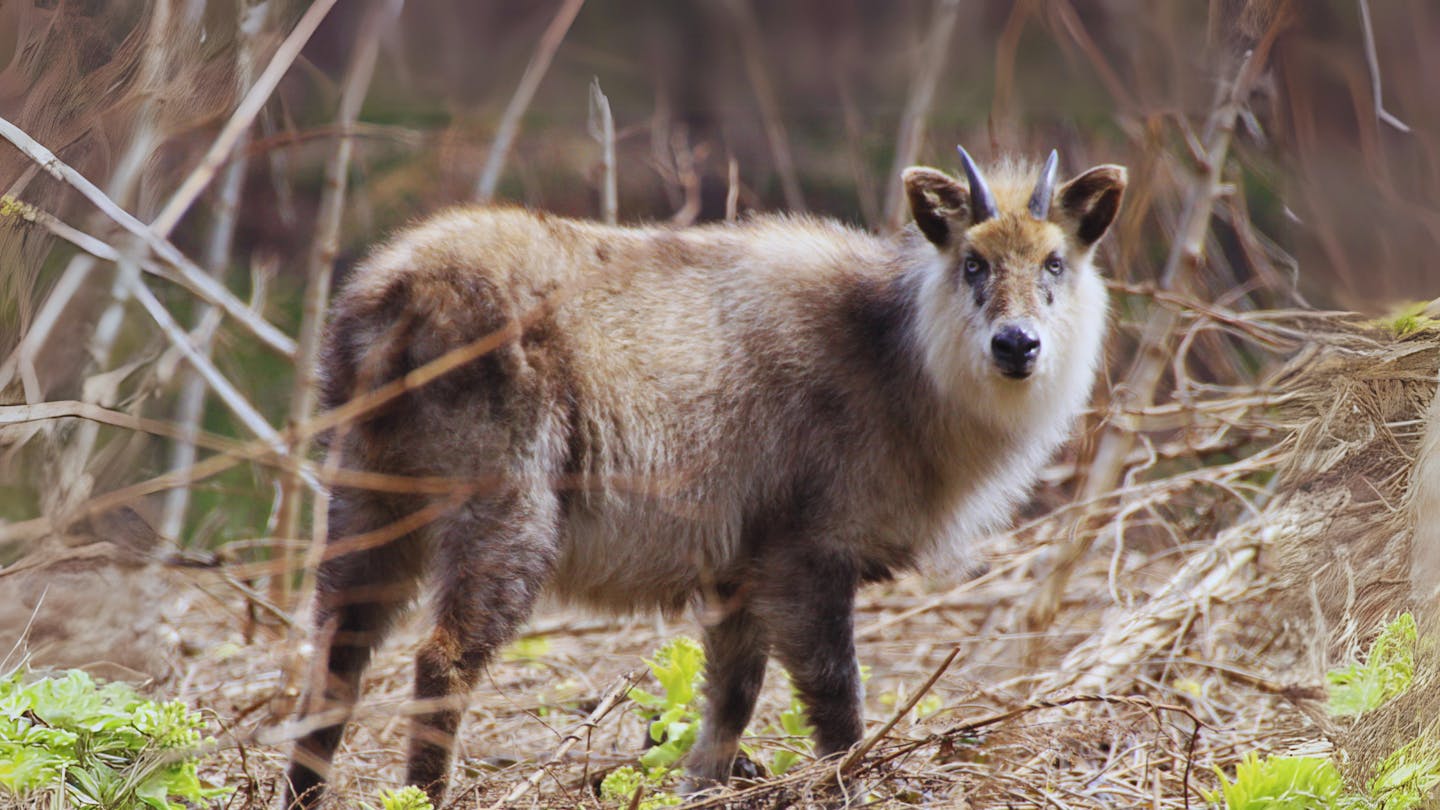

%20(1).jpg?auto=compress%2Cformat&h=600&w=600)


